
漢德百科全書 | 汉德百科全书

 History
History
 M 1500 - 2000 AD
M 1500 - 2000 AD

 History
History

 History
History
 N 2000 - 2100 AD
N 2000 - 2100 AD
 India
India
 Karnataka
Karnataka

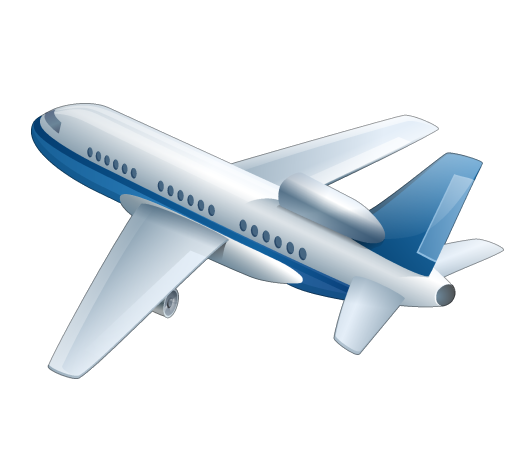
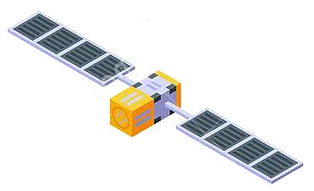
 Aerospace
Aerospace
 Missions to Mars
Missions to Mars

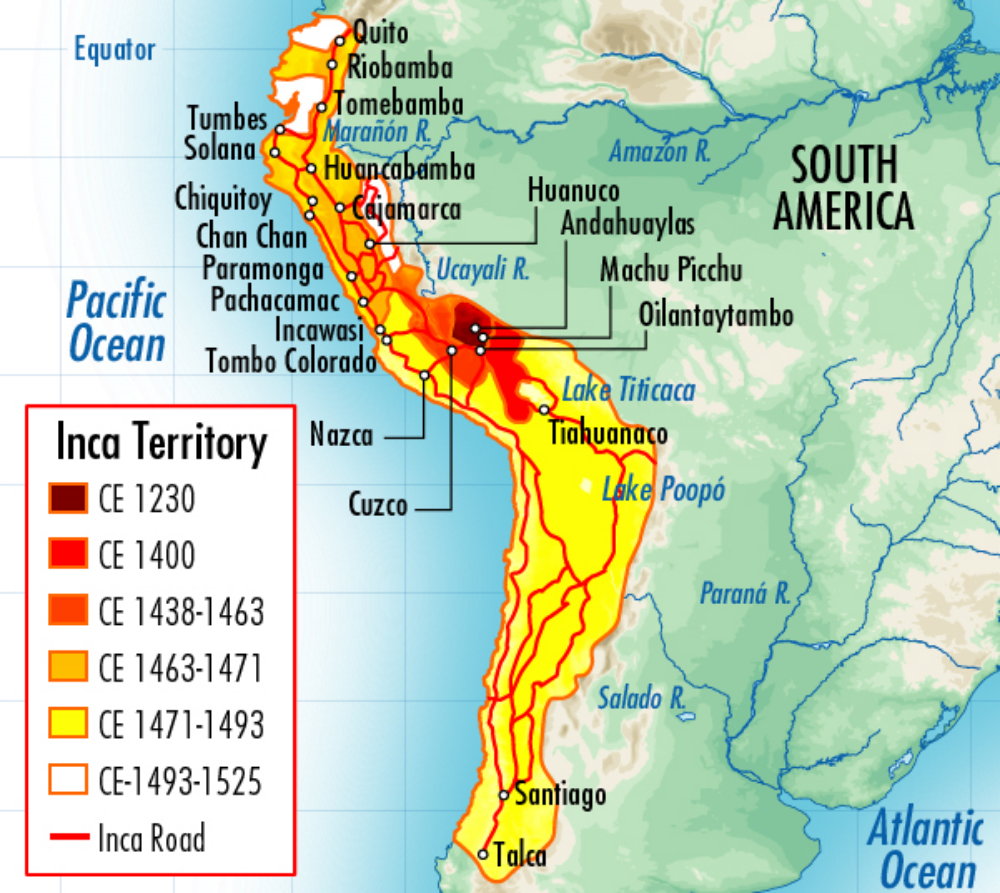
印加帝国(克丘亚语:Tawantinsuyu)是11世纪至16世纪时位于南美洲的古老帝国,亦是前哥伦布时期美洲最大的帝国,[1]印加帝国的政治、军事和文化中心位于今日秘鲁的库斯科。印加帝国的重心区域分布在南美洲的安第斯山脉上,其主体民族印加人也是美洲三大文明印加文明的缔造者。
印加人的祖先生活在秘鲁的高原地区,后来他们迁徙到库斯科,建立了库斯科王国,这个国家在1438年发展为印加帝国。印加帝国在1438年到1533年间,运用了从武力征服,到和平同化等各种方法,使得印加帝国的版图几乎涵盖了整个南美洲西部(地跨秘鲁、厄瓜多尔、哥伦比亚、玻利维亚、智利、阿根廷),是一个幅员辽阔的南美洲印第安人帝国。
除了印加帝国的官方语言克丘亚语,印加人还使用数百种美洲原住民语言和各种的克丘亚语方言。印加人称印加帝国为Tawantinsuyu,意为“四方之地”,或是“四地之盟”。印加帝国内部存在着多种原始信仰,但是印加的统治阶级推崇印加宗教,信仰太阳神因蒂、创世神维拉科查、地球女神帕查玛玛等神明。[2]印加帝国的君主称萨帕·印卡,意为“独一无二的君主”,同时萨帕·印卡亦被印加人当作“太阳的儿子”。
印加帝国的国力在君主瓦伊纳·卡帕克统治期间达到顶峰。1526年,西班牙征服者弗朗西斯科·皮萨罗带领一支有168人的军队从巴拿马南下,发现了印加帝国。1529年,在瓦伊纳·卡帕克感染天花而意外去世后,两位继承人选瓦斯卡尔与阿塔瓦尔帕为了争夺王位,而爆发血腥内战,大大地削弱了印加帝国的实力。1533年,西班牙人施计杀掉了赢得内战的阿塔瓦尔帕,皮萨罗的军队与数十万名原住民盟军成功将印加征服,印加帝国灭亡,沦为西班牙帝国的殖民地。印加人的最后抵抗势力比尔卡班巴王国亦在1572年灭亡。
Als Inka (Plural Inka oder Inkas) wird heute eine indigene urbane Kultur in Südamerika bezeichnet. Oft werden als Inka auch nur die jeweiligen herrschenden Personen dieser Kultur bezeichnet. Sie herrschten zwischen dem 13. und 16. Jahrhundert über ein weit umspannendes Reich von über 200 ethnischen Gruppen,[1] das einen hohen Organisationsgrad aufwies. Zur Zeit der größten Ausdehnung um 1530 umfasste es ein Gebiet von rund 950.000 Quadratkilometern, sein Einfluss erstreckte sich vom heutigen Ecuador bis nach Chile und Argentinien; ein Gebiet, dessen Nord-Süd-Ausdehnung größer war als die Strecke vom Nordkap bis nach Sizilien. Entwicklungsgeschichtlich sind die Inka mit den bronzezeitlichen Kulturen Eurasiens vergleichbar. Das rituelle, administrative und kulturelle Zentrum war die Hauptstadt Qusqu (Cusco) im Hochgebirge des heutigen Peru.
Ursprünglich war mit dem Begriff „Inka“ die Bezeichnung eines Stammes gemeint, der nach eigener Auffassung dem Sonnengott Inti entstammte und die Umgebung Cuscos besiedelte. Seine herrschende Sippe fungierte später als Adel des gleichnamigen theokratischen Reiches. Aus ihr rekrutierten sich auch der Klerus[2] und die Offiziere der Inka-Armee. Sapa Inka („einziger Inka“) war der Titel des Inka-Herrschers des Tawantinsuyu („Land der vier Teile, Reich der vier Weltgegenden“ – so die Selbstbezeichnung des Reiches).
インカ帝国(インカていこく、スペイン語:Imperio Inca、ケチュア語:タワンティン・スウユ(Tawantinsuyo, Tahuantinsuyo))は、南アメリカのペルー、ボリビア(チチカカ湖周辺)、エクアドルを中心にケチュア族が築いた国。文字を持たない社会そして文明であった。
首都はクスコ。世界遺産である15世紀のインカ帝国の遺跡「マチュ・ピチュ」から、さらに千メートル程高い3,400mの標高にクスコがある。1983年12月9日、クスコの市街地は世界遺産となった。
前身となるクスコ王国は13世紀に成立し、1438年のパチャクテク即位による国家としての再編を経て、1533年にスペイン人のコンキスタドールに滅ぼされるまで約200年間続いた。最盛期には、80の民族と1,600万人の人口をかかえ、現在のチリ北部から中部、アルゼンチン北西部、コロンビア南部にまで広がっていたことが遺跡および遺留品から判明している。
インカ帝国は、アンデス文明の系統における最後の先住民国家である。メキシコ・グアテマラのアステカ文明、マヤ文明と対比する南米の原アメリカの文明として、インカ文明と呼ばれることもある。その場合は、巨大な石の建築と精密な石の加工などの技術、土器や織物などの遺物、生業、インカ道路網を含めたすぐれた統治システムなどの面を評価しての呼称である。なお、インカ帝国の版図に含まれる地域にはインカ帝国の成立以前にも文明は存在し、プレ・インカと呼ばれている。
インカ帝国は、被征服民族についてはインカ帝国を築いたケチュア族の方針により比較的自由に自治を認めていたため、一種の連邦国家のような体をなしていた。
The Inca Empire (Quechua: Tawantinsuyu, lit. "The Four Regions"[4]), also known as the Incan Empire and the Inka Empire, was the largest empire in pre-Columbian America.[5] Its political and administrative structure is considered by most scholars to have been the most developed in the Americas before Columbus' arrival.[6] The administrative, political and military center of the empire was located in Cusco, Peru. The Inca civilization arose from the Peruvian highlands sometime in the early 13th century. Its last stronghold was conquered by the Spanish in 1572.
From 1438 to 1533, the Incas incorporated a large portion of western South America, centered on the Andean Mountains, using conquest and peaceful assimilation, among other methods. At its largest, the empire joined Peru, southwest Ecuador, western and south central Bolivia, northwest Argentina, northern Chile and a small part of southwest Colombia into a state comparable to the historical empires of Eurasia. Its official language was Quechua.[7] Many local forms of worship persisted in the empire, most of them concerning local sacred Huacas, but the Inca leadership encouraged the sun worship of Inti – their sun god – and imposed its sovereignty above other cults such as that of Pachamama.[8] The Incas considered their king, the Sapa Inca, to be the "son of the sun."[9]
The Inca Empire was unique in that it lacked many features associated with civilization in the Old World. In the words of one scholar,[10]
The Incas lacked the use of wheeled vehicles. They lacked animals to ride and draft animals that could pull wagons and plows... [They] lacked the knowledge of iron and steel... Above all, they lacked a system of writing... Despite these supposed handicaps, the Incas were still able to construct one of the greatest imperial states in human history.
— Gordon McEwan, The Incas: New Perspectives
Notable features of the Inca Empire include its monumental architecture, especially stonework, extensive road network reaching all corners of the empire, finely-woven textiles, use of knotted strings (quipu) for record keeping and communication, agricultural innovations in a difficult environment, and the organization and management fostered or imposed on its people and their labor.
The Incan economy has been described in contradictory ways by scholars:[11]
... feudal, slave, socialist (here one may choose between socialist paradise or socialist tyranny)
— Darrell E. La Lone, The Inca as a Nonmarket Economy: Supply on Command versus Supply and Demand
The Inca empire functioned largely without money and without markets. Instead, exchange of goods and services was based on reciprocity between individuals and among individuals, groups, and Inca rulers. "Taxes" consisted of a labour obligation of a person to the Empire. The Inca rulers (who theoretically owned all the means of production) reciprocated by granting access to land and goods and providing food and drink in celebratory feasts for their subjects.[12]
L’Empire inca (Tahuantinsuyu, Tahuantinsuyo ou Tawantin Suyu en quechua, signifiant « quatre en un » ou « le tout des quatre parts »1) fut, du XVe au XVIe siècle, le plus vaste empire de l'Amérique précolombienne. Son territoire s'est en effet étendu, à son extension maximale, sur près de 4 500 km de long, depuis le Sud-Ouest de l'actuelle Colombie (au Río Patía), au nord, jusqu'au milieu de l'actuel Chili (au Río Maule), au sud, et comprenant la quasi totalité des territoires actuels du Pérou et de l'Équateur, ainsi qu'une partie importante de la Bolivie et significative de l'Argentine du Nord-Ouest2.
L'Impero inca (Tawantinsuyu in lingua aymara e quechua moderne, o Tahuantinsuyo in antica lingua quechua) è stato il più vasto impero precolombiano del continente americano. La sua esistenza va dal XIII secolo fino al XVI secolo e la sua capitale fu Cuzco, nell'attuale Perù.
Il Perù è stato la culla della civiltà inca, uno dei maggiori popoli nativi americani. La civiltà Inca unificò, conquistando o annettendo pacificamente, la maggior parte dei territori occidentali dell'America del Sud. A ogni popolo conquistato venivano imposti l'idioma e la religione dell'impero. A loro volta, gli inca si arricchivano della cultura dei popoli annessi.
El Imperio incaico o inca (en quechua: Tawantinsuyu, lit. "Las cuatro regiones o divisiones") fue el mayor imperio en la América precolombina.2
Al territorio del mismo se denominó Tawantinsuyu y al período de su dominio se le conoce, además, como incanato y/o incario. Floreció en la región andina del subcontinente entre los siglos xv y xvi, como consecuencia del apogeo de la civilización incaica.[cita requerida] Abarcó cerca de dos millones de kilómetros cuadrados entre el océano Pacífico y la selva amazónica, desde las cercanías de Pasto (Colombia) en el norte hasta el río Maule (Chile) por el sur.
Los orígenes del imperio se remontan a la victoria de las etnias cuzqueñas (Región Sur del actual Perú), lideradas por Pachacútec, frente a la confederación de estados chancas en 1438. Luego de la victoria, el curacazgo incaico fue reorganizado por Pachacútec, con quien el Imperio incaico inició una etapa de continua expansión, que prosiguió con su hermano Cápac Yupanqui, luego por parte del décimo inca Túpac Yupanqui, y finalmente del undécimo inca Huayna Cápac, quien consolidó los territorios. En esta etapa la civilización incaica logró la máxima expansión de su cultura, tecnología y ciencia, desarrollando los conocimientos propios y los de la región andina, así como asimilando los de otros estados conquistados.
La Civilización incaica surgió de las tierras altas del Perú en algún momento a principios del siglo xiii. Su último bastión fue conquistado por los españoles en 1572.
Luego de este periodo de apogeo el imperio entró en declive por diversos problemas, siendo el principal la confrontación por el trono entre los hijos de Huayna Cápac: los hermanos Huáscar y Atahualpa, que derivó incluso en una guerra civil. Entre los incas la viruela acabó con el monarca Huayna Capac, provocó la guerra civil previa a la aparición hispana y causó un desastre demográfico en el Tahuantinsuyu. Finalmente Atahualpa vencería en 1532. Sin embargo su ascenso al poder coincidió con el arribo de las tropas españolas al mando de Francisco Pizarro, que capturaron al inca y luego lo ejecutaron. Con la muerte de Atahualpa en 1533 culminó el Imperio incaico. Sin embargo, varios incas rebeldes, conocidos como los «Incas de Vilcabamba», se rebelaron contra los españoles hasta 1572, cuando fue capturado y decapitado el último de ellos: Túpac Amaru I.
Los incas consideraban a su rey, el Sapa Inca, como el "hijo del sol". Muchas formas locales de adoración persistieron en el imperio, la mayoría de ellas relacionadas con las sagradas Huacas locales, pero los líderes incas alentaron el culto al sol de Inti - su dios del sol - e impusieron su soberanía por encima de otros cultos como el de Pachamama.
La economía inca ha sido descrita de manera contradictoria por los eruditos: como "feudal, esclavo, socialista (aquí uno puede elegir entre el paraíso socialista o la tiranía socialista)". El imperio Inca funcionó en gran parte sin dinero y sin mercados. En cambio, el intercambio de bienes y servicios se basó en la reciprocidad entre individuos y entre individuos, grupos y gobernantes incas. 'Impuestos' consistía en una obligación laboral de una persona para el Imperio. Los gobernantes incas (que teóricamente poseían todos los medios de producción) correspondieron al otorgar acceso a la tierra y los bienes y proporcionar alimentos y bebidas en las celebraciones de sus súbditos.
El Imperio incaico abarcó los actuales territorios correspondientes al extremo suroccidental de Colombia en la frontera, pasando por Ecuador, principalmente por Perú, el oeste de Bolivia, la mitad norte de Chile y el norte, noroeste y oeste de Argentina.
El imperio estuvo subdividido en cuatro suyos: el Chinchaysuyu (Chinchay Suyu) al norte, el Collasuyu (Qulla Suyu) al sur, el Antisuyu (Anti Suyu) al este y Contisuyu (Kunti Suyu) al oeste.
La capital del imperio fue la ciudad de Cuzco, en el actual Perú.
Импе́рия и́нков (кечуа Tawantin Suyu, Tawantinsuyu, Тауантинсу́йу) — крупнейшее по площади и численности населения индейское раннеклассовое государство в Южной Америке в XI—XVI веках. Занимало территорию от нынешнего Пасто в Колумбии до реки Мауле в Чили. Империя включала в себя полностью территории нынешних Перу, Боливии и Эквадора (за исключением части равнинных восточных районов, поросших непроходимой сельвой), частично Чили, Аргентины и Колумбии. Первым европейцем, проникшим в империю инков, был португалец Алежу Гарсия в 1525 году. В 1533 году испанские конкистадоры установили контроль над большей частью империи, а в 1572 году государство инков прекратило своё существование. Есть гипотеза, что последним независимым пристанищем инков является ненайденный город (страна) Пайтити (до середины или конца XVIII века)[1].
Археологические исследования показывают, что большое количество достижений было унаследовано инками от предшествующих цивилизаций, а также от подчинённых ими соседних народов. К моменту появления на исторической арене инков в Южной Америке существовал ряд цивилизаций: Моче (культура мочика, известная цветной керамикой и ирригационными системами), Уари (это государство явилось прообразом империи инков, хотя население говорило, по-видимому, на ином языке — аймара), Чиму (центр — город Чан-Чан, характерная керамика и архитектура), Наска (известные тем, что создали так называемые линии Наска, а также своими системами подземных водопроводов, керамикой), Пукина (цивилизация города Тиауанако с населением около 40 тысяч человек, находившаяся к востоку от озера Титикака), Чачапояс («Воины Туч», известные своей грозной крепостью Куэлап, которую ещё называют «Мачу-Пикчу севера»).

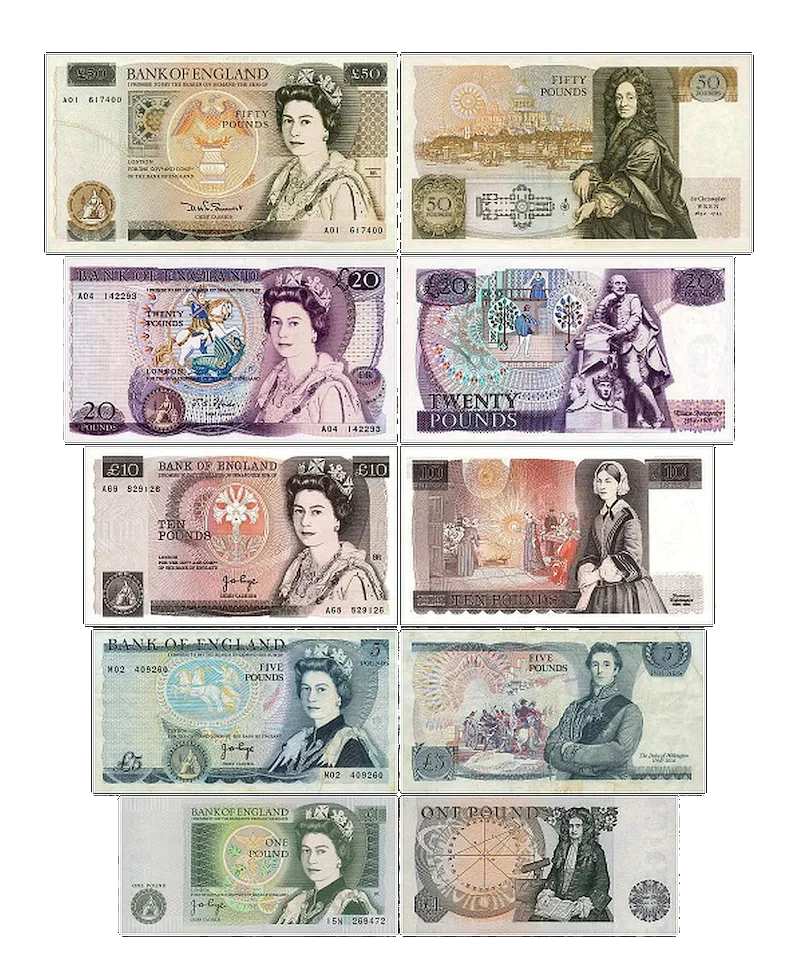

Commonwealth of England war die offizielle Bezeichnung der englischen Republik von 1649 bis 1660. Das Commonwealth umfasste zunächst nur England (inklusive Wales), dann auch Schottland und Irland.
英格兰共和国(英语:Commonwealth of England),另译英格兰联邦。是一个曾存在于1649年-1660年间的政体,分别于1649年起统治英格兰、1652年起统治爱尔兰,1653年起统治苏格兰。领土曾囊括今英国、爱尔兰、西印度群岛、纽芬兰与北美东岸地区。
由奥利弗·克伦威尔指挥的圆颅党在第二次英格兰内战胜利后,处决英王查理一世并建立由国务会议统治的共和国。1652年与1653年,克伦威尔分别征服苏格兰与爱尔兰,在造成当地民众大量死亡下成功统一英伦三岛。1653年,克伦威尔解散长时间未轮替的长期议会。并在政府约法中被任命为终身就任的“英格兰、苏格兰、爱尔兰联邦”护国公。
护国公时期的英格兰致力于解决政治的混乱,建立一个稳定的政体。同时发动数场对外战争,包括与荷兰因商业问题导致第一次英荷战争、与西班牙因殖民地导致的英西战争。克伦威尔于1657年与法王路易十四签订盟约,英格兰派遣部队至低地地区供法国元帅蒂雷纳子爵指挥。在法国赢得沙丘战役后,英格兰因盟约获得西属敦刻尔克。
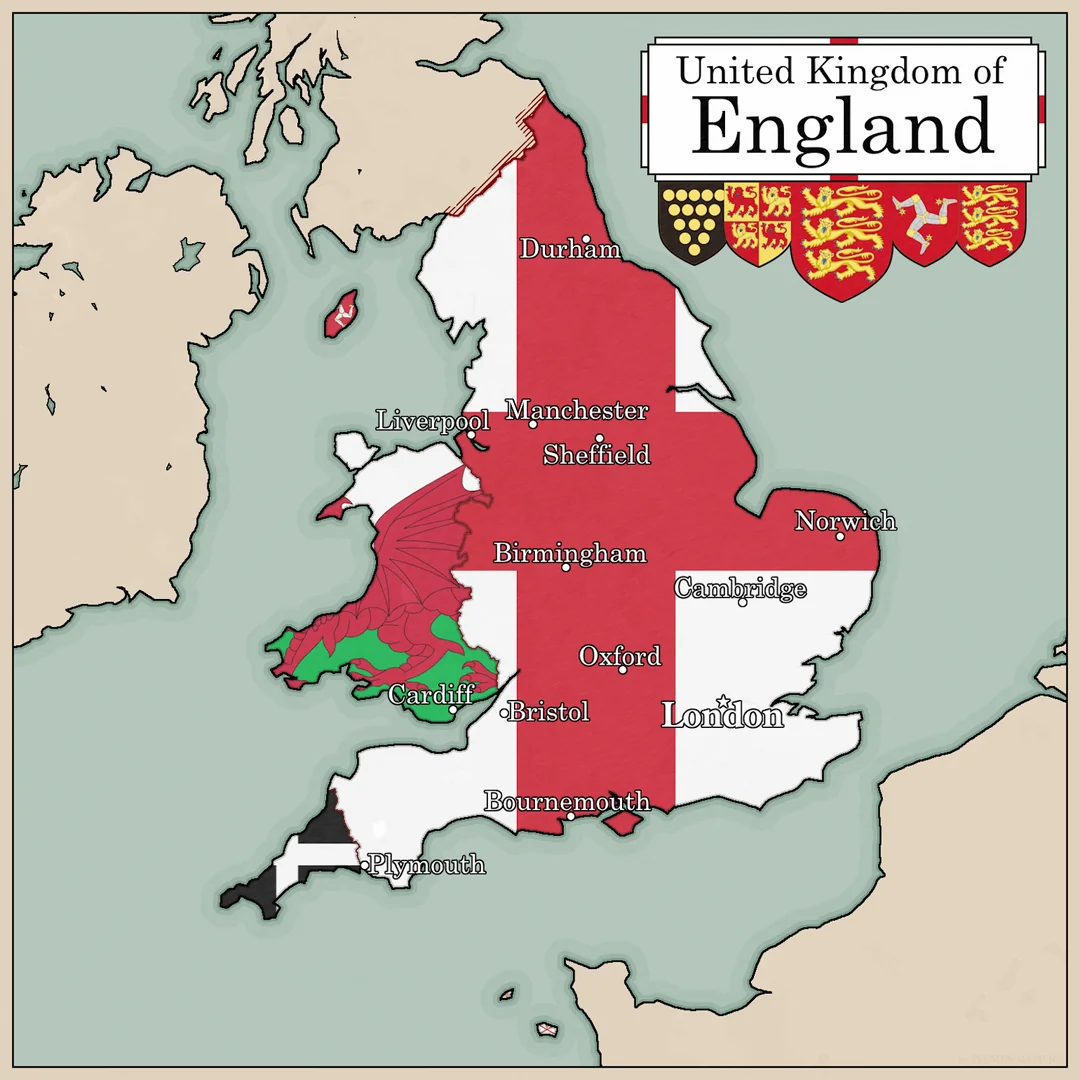
英格兰王国(英语:Kingdom of England;927年—1707年5月1日)是西欧历史上的一个国家,地处大不列颠岛南部,包含现今的英格兰与威尔士。王室的首要居所原本是汉普郡的温切斯特,但伦敦和格洛斯特被授予同样的地位——特别是伦敦,从1066年开始已经成为英格兰王国以及1707年联合法令生效以来的英国事实上的首都。
Das Königreich England bestand vom Zusammenbruch der Heptarchie im Frühmittelalter bis zum Jahr 1707. Sein Nachfolger wurde das durch den Zusammenschluss der Königreiche von England und Schottland entstandene Königreich Großbritannien.
 England
England
 Premier League
Premier League
 Premier League 2015/16
Premier League 2015/16
 Premier League 2016/17
Premier League 2016/17
 Premier League 2017/18
Premier League 2017/18
 Premier League 2018/19
Premier League 2018/19

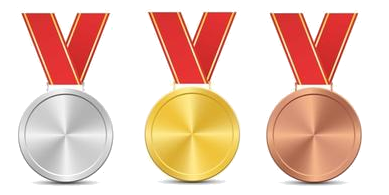 Sport
Sport
 (F)International soccer leagues
(F)International soccer leagues
 United Kingdom
United Kingdom

 Important International Organizations
Important International Organizations

Die Football Association (kurz (The) FA) ist der höchstrangige Fußballverband in England sowie den Kronbesitzungen Jersey, Guernsey und der Isle of Man.
Die FA wurde am 26. Oktober 1863 als erster Fußballverband der Welt gegründet. Sie war maßgeblich daran beteiligt, die Regeln des modernen Fußballspiels zu formulieren, und nimmt einen besonderen Platz in der Geschichte des Sports ein. Heute ist sie Mitglied der UEFA, der FIFA und ist mit einem ständigen Sitz im International Football Association Board (IFAB) vertreten.
Alle professionellen Fußballklubs Englands müssen Mitglieder der Football Association sein, um an deren Wettbewerben teilzunehmen. Die FA ist verantwortlich für das Management der englischen Männer- und Frauen-Nationalteams, die Organisation des FA Cups – des größten und angesehensten Pokalwettbewerbs des Landes – und ist außerdem der Dachverband der English Football League (bestehend aus Championship, League One und League Two). Die Premier League ist dagegen selbstverwaltet.
Die FA spielt eine große Rolle in der Entwicklung des englischen Fußballs an der Basis, dennoch unterstützt sie weiterhin die Amateurspiele und organisiert das nationale Ligasystem.
英格兰足球总会,正确名称为足球总会(英语:The Football Association,简称:The FA)是一个管理英格兰境内(包括其他海外属地:泽西岛、根息岛及马恩岛)有关足球事务的法定机构,于1863年正式成立。
英格兰足球总会负责英格兰境内一切的足球事务,是世界上最早成立的足球官方总会,亦是西欧第一家足球协会,因此英文名称中只称为足球协会(The Football Association),而没有任何表示地区的字眼。具体工作包括设立比赛规条、管理英格兰国家足球代表队、改革足球联赛、仲裁英格兰一切俱乐部纷争等等。英格兰足球总会同时亦是欧洲足联和国际足联的会员。
ザ・フットボール・アソシエーション(英: The Football Association)は、イングランドのサッカーを統括する国内競技連盟。略称はThe FA(ジ・エフエー)である。1863年に創立された世界最古のサッカー協会であるため、英語の正式名称は国名を表す修飾語を用いず定冠詞 'The' のみを伴う形で表記される。なお、日本語の報道ではイングランドサッカー協会との呼称が定着している他、サッカー専門の雑誌などでは 'The FA' から定冠詞を省いたFA等の呼び名でも表記される。
ザ・フットボール・アソシエーションは近代サッカーのルールの策定において大きな役割を果たしたことで知られている。イングランドに存在する全てのサッカークラブが加盟する団体として、イングランドのプレミアリーグおよび国内のカップ戦を主宰している。また国内の国際サッカー連盟 (FIFA) と欧州サッカー連盟 (UEFA)を構成する加盟団体の一つであり、ルールの制定に携わっている国際サッカー評議会 (IFAB) の構成団体でもある。
The Football Association (also known as The FA) is the governing body of association football in England and the Crown dependencies of Jersey, Guernsey, and the Isle of Man. Formed in 1863, it is the oldest football association in the world and is responsible for overseeing all aspects of the amateur and professional game in its territory.
The FA sanctions all competitive football matches within its remit at national level, and indirectly at local level through the county football associations. It runs numerous competitions, the most famous of which is the FA Cup. It is also responsible for appointing the management of the men's, women's, and youth national football teams.
The FA is a member of both UEFA and FIFA and holds a permanent seat on the International Football Association Board (IFAB) which is responsible for the Laws of the Game. As the first football association, it does not use the national name "English" in its title. The FA is based at Wembley Stadium, London. The FA is a member of the British Olympic Association, meaning that the FA has control over the men's and women's Great Britain Olympic football team.[1]
All of England's professional football teams are members of the Football Association. Although it does not run the day-to-day operations of the Premier League, it has veto power over the appointment of the League Chairman and Chief Executive and over any changes to league rules.[2] The English Football League, made up of the three fully professional divisions below the Premier League, is self-governing, subject to the FA's sanctions.
La Fédération anglaise de football en anglais : The Football Association (FA) est une association regroupant les clubs de football d'Angleterre et organisant les compétitions nationales (championnat amateurs, professionnels et Coupe d'Angleterre) et les matchs internationaux de la sélection d'Angleterre.
Elle organise également les compétitions des dépendances de la Couronne d'Angleterre, sur l'Île de Man, à Guernesey et à Jersey. Formée en 1863, elle est la plus ancienne association nationale de football au Monde et joua un rôle important dans la mise en place des règles de son sport. Son siège est situé à Londres, à Wembley, après avoir été à Soho Square avant 2009.
Bien que la plus haute division du football professionnel (la Premier League) soit autonome, la Fédération anglaise a son mot à dire sur la nomination des responsables de cette ligue et ses règles. En cas de problèmes financiers, la fédération a le droit de retirer des points et de restreindre le nombre de transferts aux équipes fautives. Au niveau local, 43 « districts » (appelés County Football Association (en)) chapeautés par la fédération sont chargés de l'organisation des compétitions.
La FA finance actuellement la construction d'un Centre national du football, le St George's Park National Football Centre (en), qui reprend le modèle du Centre technique national Fernand-Sastre en France.
La Football Association (The FA) è la federazione calcistica inglese. Regolamenta e gestisce l'attività calcistica d'Inghilterra e delle dipendenze della Corona di Jersey, Guernsey e Man.
Alla Football Association è demandata anche la gestione delle selezioni nazionali che rappresentano l'Inghilterra nei vari tornei internazionali.
Essa è la più antica federazione calcistica del mondo, essendo stata fondata il 26 ottobre 1863.
Tutti i club professionistici inglesi debbono essere membri della FA, che ha la responsabilità della nomina dei tecnici delle squadre nazionali maschili e femminili dell'Inghilterra e dello staff dirigenziale della Premier League. Nonostante i campionati di livello inferiore alla Premier League si disputino sempre sotto l'egida della FA, essa non ha poteri di nomina all'interno della Lega Calcio inglese, la Football League (organizzatrice del Football League Championship, Football League One e Football League Two, rispettivamente i campionati di seconda, terza e quarta divisione nazionale).
La FA svolge un ruolo di primaria importanza nello sviluppo del calcio inglese sin dai livelli più bassi, grazie al continuo supporto del gioco a livello amatoriale, e all'organizzazione del National League System, il sistema di campionati a promozione e retrocessione il cui gradino più alto è, appunto, la Premier League.
La Asociación del Fútbol (The Football Association en inglés) es el máximo organismo del fútbol en Inglaterra y las dependencias de la Isla de Jersey, Guernsey y la Isla de Man. Fue establecida en 26 de octubre de 1863,1 y es la asociación de fútbol más antigua del mundo. Dirige a todos los clubes profesionales de Inglaterra. La FA fue determinante en la formulación de las reglas del fútbol moderno y ocupa un lugar especial en la historia. Es miembro de la UEFA y de la FIFA, y ocupa un asiento permanente en el International Football Association Board (IFAB).
Al ser la primera federación nacional de fútbol de la historia, su influencia fue muy grande durante el primer periodo de expansión de este deporte, hasta el punto que a principios del siglo XX varias federaciones extranjeras, incluidas algunas sudamericanas, también fueron miembros de la FA. A diferencia de las demás asociaciones nacionales, el nombre oficial de la FA no contiene el nombre de su país, ni tampoco el de su gentilicio (England o English).
Todos los clubes de fútbol profesional de Inglaterra deben ser miembros de la FA. La FA es responsable de las selecciones nacionales (masculina y femenina) de Inglaterra y es el órgano director de la Premier League. Cabe destacar su papel de apoyo al fútbol amateur, organizando el Sistema Nacional de Ligas.
Футбо́льная ассоциа́ция (англ. The Football Association, FA) — организация, осуществляющая контроль и управление футболом в Англии и коронных владениях Гернси, Джерси и Остров Мэн. Была основана в 1863 году и является старейшей футбольной ассоциацией в мире. Штаб-квартира Футбольной ассоциации располагается на стадионе «Уэмбли» в Лондоне.
 Renaissance architecture
Renaissance architecture
 Deutsche Renaissance
Deutsche Renaissance
 Renaissance architecture
Renaissance architecture
 Englische Renaissance
Englische Renaissance
 Renaissance architecture
Renaissance architecture
 Französische Renaissance
Französische Renaissance

 History
History
 M 1500 - 2000 AD
M 1500 - 2000 AD
 United Kingdom
United Kingdom

 *UK political system
*UK political system
 Antigua and Barbuda
Antigua and Barbuda
 Australia
Australia
 Bahamas
Bahamas
 Bangladesh
Bangladesh
 Barbados
Barbados
 Belize
Belize
 Botsuana
Botsuana
 Brunei Darussalam
Brunei Darussalam
 Commonwealth of Nations
Commonwealth of Nations
 Dominica
Dominica

 History
History

 History
History
 M 1500 - 2000 AD
M 1500 - 2000 AD
 History of the United Kingdom
History of the United Kingdom
 Ghana
Ghana
 Grenada
Grenada
 Guyana
Guyana
 India
India
 Jamaika
Jamaika
 Cameroon
Cameroon
 Canada
Canada
 Kenya
Kenya
 Kiribati
Kiribati
 Lesotho
Lesotho
 Malawi
Malawi
 Malaysia
Malaysia
 Malediven
Malediven
 Malta
Malta
 Mauritius
Mauritius
 Mauritius
Mauritius
 Mosambik
Mosambik
 Namibia
Namibia
 Nauru
Nauru
 New Zealand
New Zealand
 Nigeria
Nigeria
 Pakistan
Pakistan
 Papua-Neuguinea
Papua-Neuguinea
 Salomonen
Salomonen
 Sambia
Sambia
 Samoa
Samoa
 Seychellen
Seychellen
 Sierra Leone
Sierra Leone
 Singapore
Singapore
 Sri Lanka
Sri Lanka
 Saint Kitts and Nevis
Saint Kitts and Nevis
 St. Vincent and the Grenadines
St. Vincent and the Grenadines
 St. Vincent and the Grenadines
St. Vincent and the Grenadines
 South Africa
South Africa
 Swasiland
Swasiland
 Tansania
Tansania
 Tonga
Tonga
 Trinidad und Tobago
Trinidad und Tobago
 Tuvalu
Tuvalu
 Uganda
Uganda
 Vanuatu
Vanuatu
 United Kingdom
United Kingdom

 Important International Organizations
Important International Organizations
 Cyprus
Cyprus
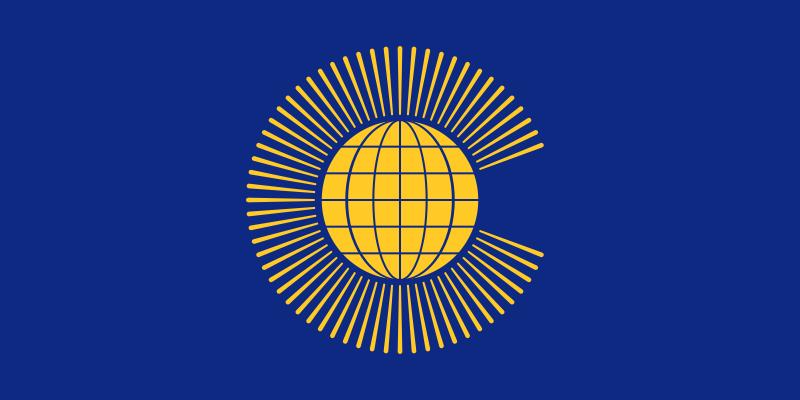

英联邦(英语:Commonwealth of Nations,新马作共和联邦,台湾作大英国协),是一个现代的国际组织,由56个英语系的主权国家联合而成。
英联邦不是一个统一的联邦国家,而是一个国际组织,英联邦也无权约束旗下任何成员国内政。英联邦元首通常由英国君主兼任,其首任元首是乔治六世,现任是查尔斯三世,但元首并无实权,秘书长才是英联邦实际上的掌权者[4][5]。该组织的成员国基本由英国及其旧殖民地组成,也以英式英语为共通语言,但英国的地位并没有凌驾于他国之上,所有成员国一律平等。目前英联邦有56个成员国,其中15个属于英联邦王国,英联邦王国的国家元首、英联邦元首均和英国的一致,即现在的查尔斯三世;另外5个属于独立君主国,它们不以英国君主为自己的元首,而是自立君主,这五国是文莱、斯威士兰、莱索托、马来西亚、汤加;其余的36个均属于共和国,没有君主。
The Commonwealth of Nations, generally known simply as the Commonwealth,[3] is a political association of 53 member states, nearly all of them former territories of the British Empire.[4] The chief institutions of the organisation are the Commonwealth Secretariat, which focuses on intergovernmental aspects, and the Commonwealth Foundation, which focuses on non-governmental relations between member states.[5]
The Commonwealth dates back to the first half of the 20th century with the decolonisation of the British Empire through increased self-governance of its territories. It was originally created as the British Commonwealth of Nations[6] through the Balfour Declaration at the 1926 Imperial Conference, and formalised by the United Kingdom through the Statute of Westminster in 1931. The current Commonwealth of Nations was formally constituted by the London Declaration in 1949, which modernised the community and established the member states as "free and equal".[7]
The human symbol of this free association is the Head of the Commonwealth, currently Queen Elizabeth II, and the 2018 Commonwealth Heads of Government Meeting appointed Charles, Prince of Wales to be her designated successor, although the position is not technically hereditary. The Queen is the head of state of 16 member states, known as the Commonwealth realms, while 32 other members are republics and five others have different monarchs.
Member states have no legal obligations to one another, but are connected through their use of the English language and historical ties. Their stated shared values of democracy, human rights and the rule of law are enshrined in the Commonwealth Charter[8] and promoted by the quadrennial Commonwealth Games.
The countries of the Commonwealth cover more than 29,958,050 km2 (11,566,870 sq mi), equivalent to 20% of the world's land area, and span all six inhabited continents.
Le Commonwealth ou Commonwealth of Nations (littéralement, la « Communauté des Nations ») est une organisation intergouvernementale composée de 53 États membres qui sont presque tous d'anciens territoires de l'Empire britannique.
Le Commonwealth a émergé au milieu du XXe siècle pendant le processus de décolonisation. Il est formellement constitué par la Déclaration de Londres de 1949 qui fait des États membres des partenaires « libres et égaux ». Le symbole de cette libre association est la reine Élisabeth II qui est chef du Commonwealth. La reine est également le chef d'État monarchique des 16 royaumes du Commonwealth. Les autres États membres sont 32 républiques et cinq monarchies dont le monarque est différent.
Les États membres n'ont aucune obligation les uns envers les autres. Ils sont réunis par la langue, l'histoire et la culture et des valeurs décrites dans la Charte du Commonwealth telles que la démocratie, les droits humains et l'état de droit.
Les États du Commonwealth couvrent 29 958 050 km2 de territoire sur les cinq continents habités. Sa population est estimée à 2,328 milliards d'habitants.
Il Commonwealth delle Nazioni o Commonwealth (acronimo CN) è un'organizzazione intergovernativa di 53 Stati membri indipendenti, tutti accomunati, eccetto il Mozambico e il Ruanda, da un passato storico di appartenenza all'Impero britannico, del quale il Commonwealth è una sorta di sviluppo su base volontaria. La popolazione complessiva degli stati che vi aderiscono è di oltre due miliardi di persone. La parola Commonwealth deriva dall'unione di common (comune) e wealth (benessere), cioè benessere comune.
In passato fu noto anche come Commonwealth britannico, benché tale definizione esistette formalmente solo dalla fondazione nel 1926 fino al 1948.
La Mancomunidad de Naciones (en inglés: Commonwealth of Nations)?, antiguamente Mancomunidad Británica de Naciones (British Commonwealth of Nations), es una organización compuesta por 53 países soberanos independientes y semi independientes que, con la excepción de Mozambique y Ruanda,1 comparten lazos históricos con el Reino Unido. Su principal objetivo es la cooperación internacional en el ámbito político y económico, y desde 1950 la pertenencia a ella no implica sumisión alguna a la Corona británica, aunque se respeta la figura de la reina del Reino Unido. Con el ingreso de Mozambique, la organización ha favorecido el término Mancomunidad de Naciones para subrayar su carácter internacionalista. Sin embargo, el adjetivo británico se sigue utilizando con frecuencia para diferenciarla de otras mancomunidades existentes a nivel internacional.
La reina Isabel II del Reino Unido es la cabeza de la organización, según los principios de la Mancomunidad, «símbolo de la libre asociación de sus miembros».
Содру́жество на́ций (англ. Commonwealth of Nations, до 1946 года — Британское Содружество наций — англ. British Commonwealth of Nations), кратко именуемое просто Содружество (англ. The Commonwealth) — добровольное объединение суверенных государств, в которое входят Великобритания и почти все её бывшие доминионы, колонии и протектораты. Членами Содружества также являются Мозамбик, Руанда, Намибия и Камерун[2].
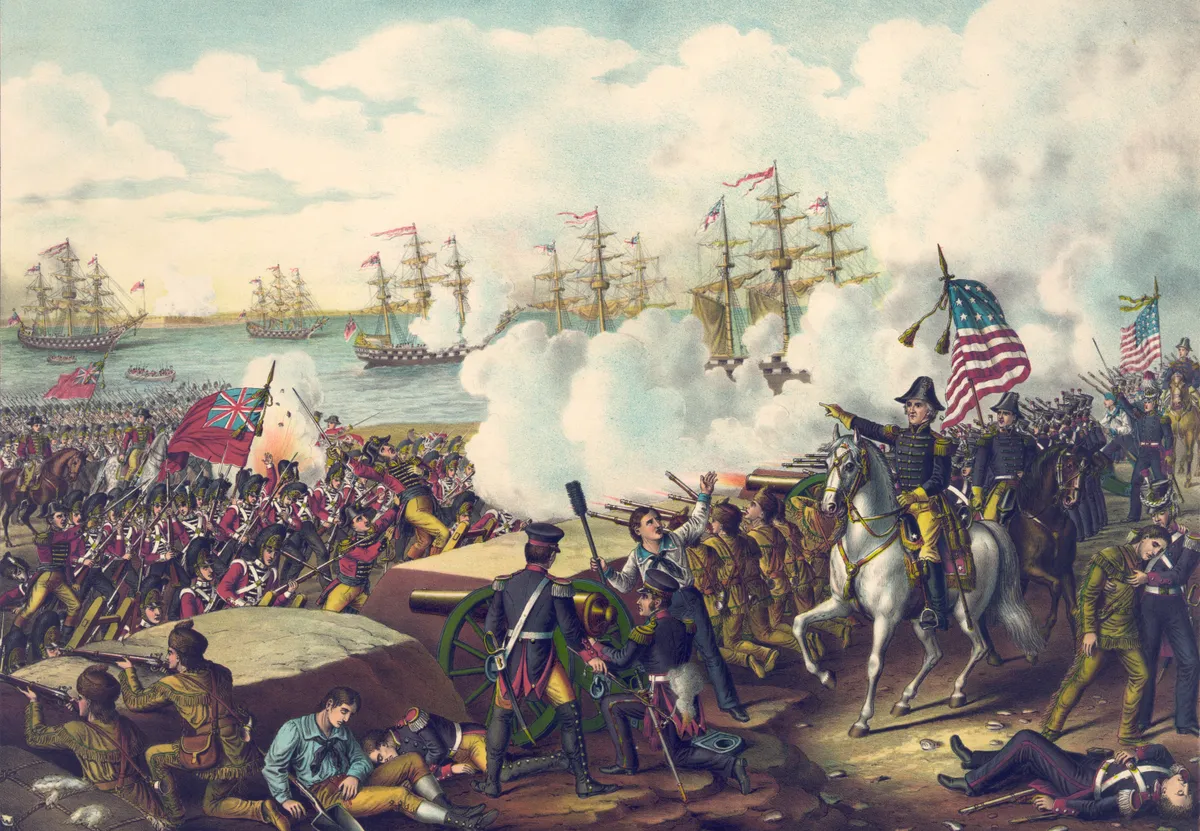
Der Britisch-Amerikanische Krieg zwischen den Vereinigten Staaten und dem Vereinigten Königreich, auch bekannt als Krieg von 1812, Zweiter Unabhängigkeitskrieg oder Mr. Madisons Krieg, begann mit der Kriegserklärung der Vereinigten Staaten am 18. Juni 1812 und wurde durch den Frieden von Gent vom 24. Dezember 1814 beendet, auf den jedoch weitere Kämpfe folgten, die bis in das Jahr 1815 dauerten. Als Ergebnis des Krieges wurde im Wesentlichen der Status quo ante bellum wiederhergestellt.
1812年战争(英语:War of 1812),又称第二次美国独立战争(Second American War of Independence)、第二次美国革命(Second American Revolution)、美英战争,是美国方同盟与英国方同盟之间发生于1812年至1815年的战争。名义上是美国正式向英国宣战,然而英国军队有50%兵员是加拿大的民兵;同时,美洲原住民部落由于种种原因也卷入了战争。
1812年6月18日,美国向英国宣战。1812年至1813年,美国攻击英国北美殖民地加拿大各省。1813年10月至1814年3月,英国在欧洲击败拿破仑,将更多的兵力增援北美战场。英国占领美国的缅因州,并且一度攻占美国首都华盛顿,对美国国会大厦和白宫进行了名为华盛顿大火的焚烧行动。但是英国陆军在美国南部的路易斯安那州战场、尚普兰湖战役、巴尔的摩战役、新奥尔良战役中多次遭到挫败,并且海军也遭受败局。1815年双方停战,边界恢复原状。

Britisch-Indien (englisch British India oder British Raj, aus Hindi [राज] rāj [rɑːdʒ] Listenⓘ/?)[1] bezeichnet im engeren Sinne das Britische Kolonialreich auf dem indischen Subkontinent zwischen 1858 und 1947. Britisch-Indien entstand nach der Niederschlagung der Indischen Rebellion von 1857, indem die bisherigen Besitzungen der Britischen Ostindien-Kompanie in eine Kronkolonie umgewandelt wurden. Zur Zeit seiner größten Expansion umfasste Britisch-Indien nicht nur das Gebiet der heutigen Republik Indien (gegründet 1947), sondern auch die Gebiete der heutigen Staaten Pakistan, Bangladesch, Bhutan, Myanmar und Teile von Kaschmir (unter der gegenwärtigen Kontrolle der Volksrepublik China). Kleinere Gebiete unter der Kontrolle anderer Staaten auf dem indischen Subkontinent waren Portugiesisch-Indien und Französisch-Indien. Niederländisch-Indien bezieht sich auf das heutige Indonesien (siehe Niederländische Besitzungen in Südasien).
Im Jahr 1876 wurde Königin Victoria von Großbritannien zur Kaiserin von Indien ausgerufen, und das Kaiserreich Indien (Indian Empire) galt als das „Kronjuwel des britischen Empire“ (the Jewel in the Crown of the British Empire). Eine Besonderheit Britisch-Indiens war, dass nur etwa zwei Drittel seiner Bevölkerung und die Hälfte der Landfläche unter direkter britischer Herrschaft standen. Der Rest befand sich unter der Herrschaft von einheimischen Fürstendynastien, die in einem persönlichen Treueverhältnis zur britischen Krone standen. Es gab insgesamt mehr als 500 solcher Fürstenstaaten, die sehr unterschiedlich groß waren. Manche Maharadschas herrschten nur über einige Dörfer, einige dagegen über ausgedehnte Länder mit Millionen Untertanen. Unter der Bezeichnung Indien war diese Union Teilnehmer beider Weltkriege, Gründungsmitglied des Völkerbundes, der Vereinten Nationen und Teilnehmer der Olympischen Spiele von 1900, 1920, 1928, 1932 und 1936.
1947 erlangte Britisch-Indien seine Unabhängigkeit und durch die Teilung Indiens wurde es in zwei Dominions aufgespalten, die Indische Union und Pakistan. Die Provinz Burma (das heutige Myanmar) im Osten Britisch-Indiens war bereits 1937 zu einer eigenständigen Kolonie erklärt worden, die schließlich 1948 die Unabhängigkeit erlangte.[2][3] Bangladesch war bis 1971 als Ost-Pakistan Provinzialstaat von Pakistan und erlangte infolge des Bangladesch-Krieges seine Unabhängigkeit.
英属印度(英语:British Raj[注 1]或 British India[注 2])是指英国在1858年至1947年在印度次大陆建立的殖民性质政治实体,其领地覆盖南亚今印度、孟加拉国、巴基斯坦以及东南亚的缅甸。自1858年起,由于印度兵哗变,不列颠东印度公司完成之前的代管使命,向维多利亚女王移交权力。此政治实体的正式名称为印度(英语:India),正式国号为印度帝国(英语:Indian Empire)[3]。1876年5月1日,维多利亚女王即位为印度女皇,此后的英国君主均以“印度皇帝”之头衔统治印度。之后几十年间,印度先后成为了国际联盟和联合国的创始会员国,并分别于1900年、1920年、1924年、1928年、1932年及1936年以独立身份参加夏季奥运会。
虽说是殖民时代的产物,但英属印度时期,很多领土也并没有由英国直接控制,而是允许作为半自治土邦。“土邦”由王公、王侯(塔库尔)和行政长官所统治,土邦领主们必须接受条约,并接受印度皇帝(即英国君主)的共主地位和承认为领地的最高统治者。这种模式被称为“附属联盟”。位于阿拉伯地区的亚丁自1839年成为英属印度的一部分,缅甸则是由1886年开始,两者先后于1932年和1937年成为英国直辖殖民地。
锡兰(今斯里兰卡)处于印度次大陆的边缘,但不属于英属印度的一部分,而是由伦敦直接控制的直辖殖民地。英国征服次大陆初期,大英帝国统治区域,条约仅限于次大陆的部分地区,初期的殖民机构设于加尔各答,后来移治于德里。各国相继独立以后,独立之前的关联区域被广泛地称为英属印度。法属印度和葡属印度仅限于次大陆沿海部分区域,这些区域分别由法国和葡萄牙进行殖民统治,独立之后并入印度。英属印度时期的1947年即印度建国初期,由于印度教徒和穆斯林之间的矛盾与对立,形成印巴分治的状态。再后来的1971年,由于地缘隔绝和种族差异,巴基斯坦的飞地——东巴基斯坦独立,建立孟加拉人民共和国。

 Civilization
Civilization
 Music
Music
 Financial
Financial
 Historical coins, banknotes
Historical coins, banknotes
 Architecture
Architecture
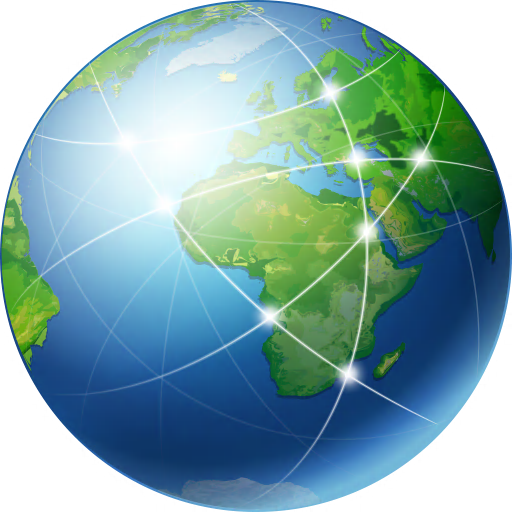 Geography
Geography
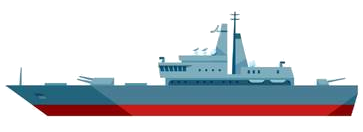
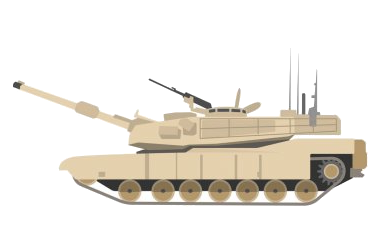

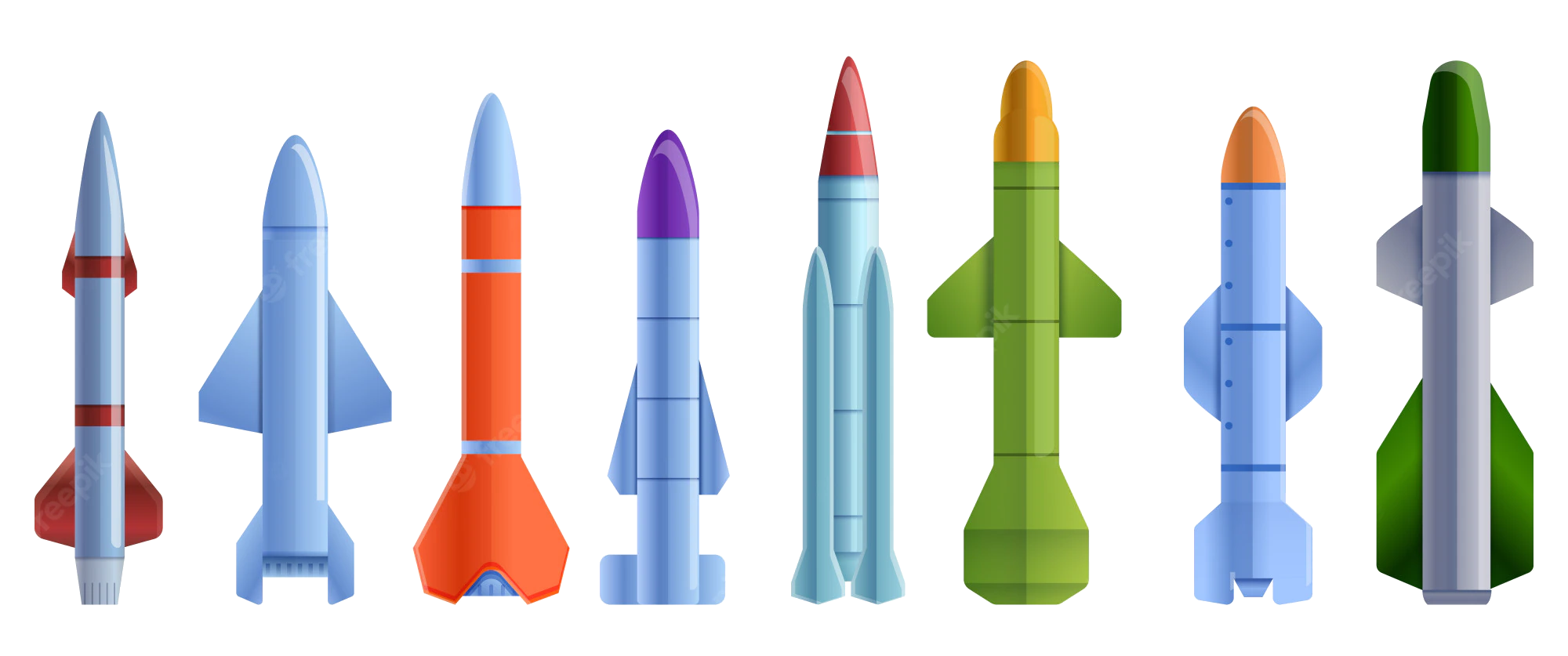 Military, defense and equipment
Military, defense and equipment